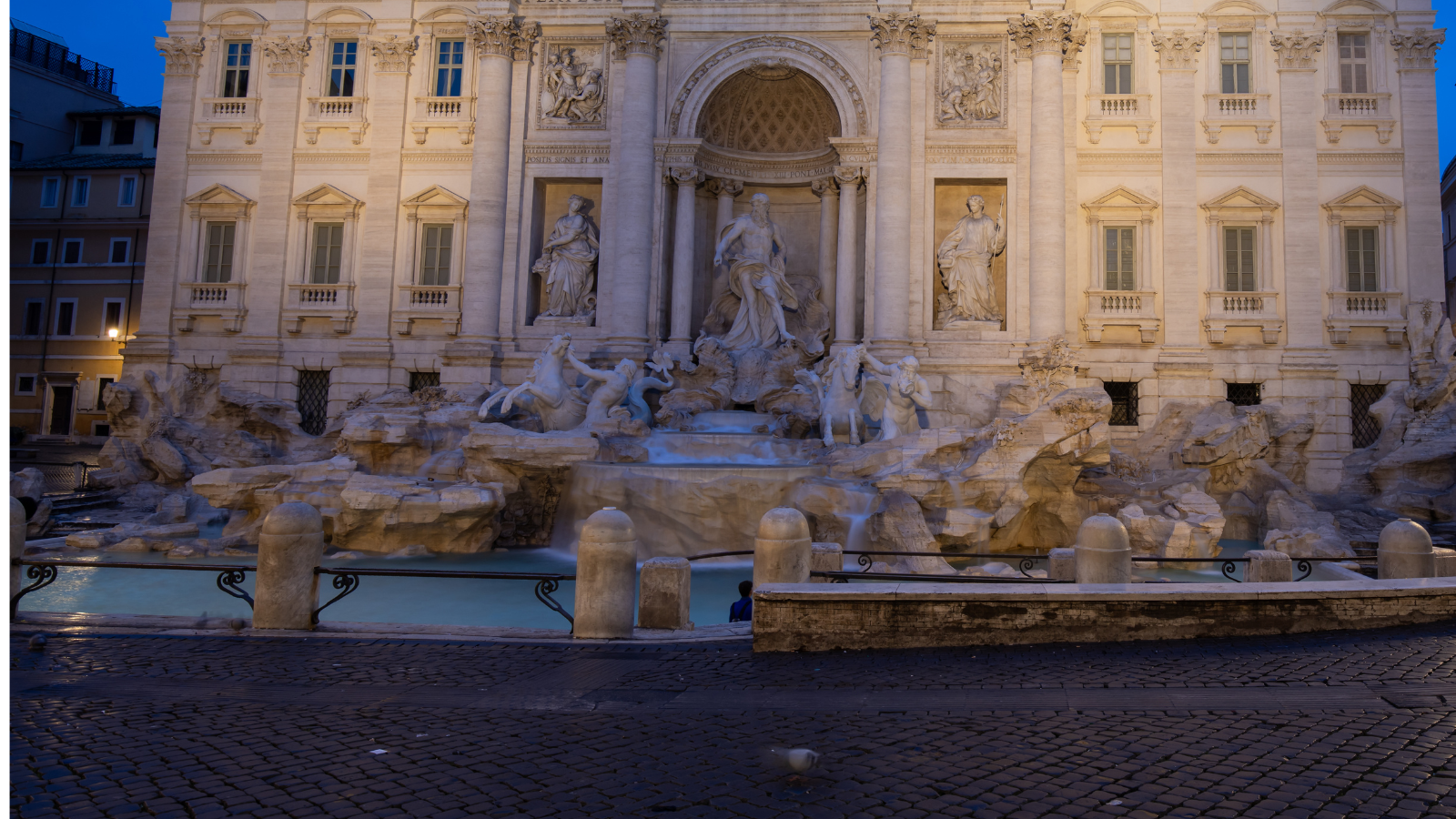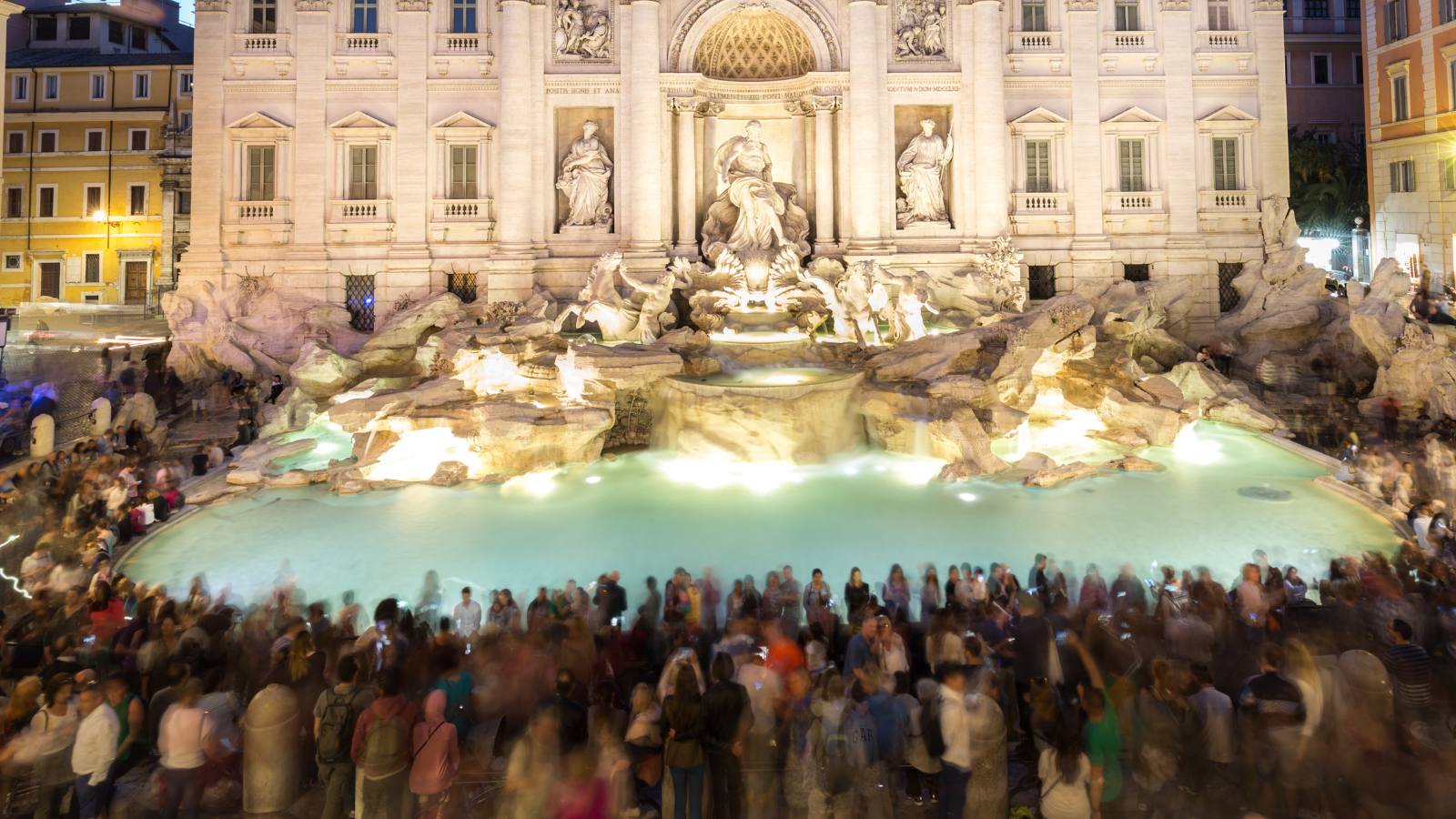All Roads Lead to Rome for Active Senior and Empty Nester Travelers
Rome, the Eternal City, offers a captivating blend of history, culture, and modern amenities, making it an ideal destination for active senior travelers and empty nesters.
From its ancient ruins and majestic cathedrals to its vibrant neighborhoods and tranquil parks, Rome provides a diverse range of experiences. This article explores the myriad aspects that make Rome a perfect getaway, ensuring a memorable and enriching journey for senior travelers.
A word of warning – Rome is the 2nd most visited city in Europe, just behind Paris. Rome receives an average of 7–10 million tourists a year, which can double on holy years. So, be prepared for crowds year round. (There is really no ‘off season’ in Rome)
Why Rome makes a great travel destination for active Empty Nesters and Seniors
Rome’s rich tapestry of history and culture is complemented by its accessible infrastructure, making it an attractive destination for seniors. The city’s ancient landmarks, such as the Colosseum and the Vatican, are interwoven with contemporary attractions, creating an environment where the past and present coexist harmoniously.
The city is pedestrian-friendly, with numerous guided tours and walking paths that allow seniors and older adults to explore at their own pace. It provides an array of activities tailored to different energy levels and interests.
The Cultural Significance of Rome
Rome’s history spans over 2,500 years, making it one of the oldest continuously inhabited cities in the world. As the heart of the Roman Empire, it played a pivotal role in shaping Western civilization. Its cultural significance is evident in its architecture, art, and religious heritage. Iconic sites like the Pantheon, the Vatican, and the Roman Forum offer glimpses into Rome’s illustrious past, providing enriching experiences for history enthusiasts.
Preparing for the Trip
Essential Travel Tips for Senior Travelers
Preparation is key to a successful trip. Travelers should ensure they have travel insurance, copies of important documents, and a list of emergency contacts. Staying hydrated, wearing comfortable footwear, and taking regular breaks can help manage fatigue while exploring the city.
Health and Safety Precautions for Older Travelers Visiting Rome
It’s advisable for older travelers to consult with their healthcare providers before traveling. Carrying essential medications and understanding the local healthcare system are vital.
Rome’s pharmacies are well-equipped and can provide many basic health services. And even though many Romans can communicate in some English, having a basic understanding of Italian phrases related to health and your specific conditions can be beneficial.
If you do need to visit a doctor, consider using a ‘virtual medical service’, if the need is mild. We had great results when we were dealing with a persistent cough and congestion on our last trip to Rome. Contacting and setting up a ‘virtual visit’ was easy. They emailed a prescription for an antibiotic quickly. And it only cost $50. They can submit the expense to your U.S. insurance provider for reimbursement, if applicable.
Packing Guide: What Seniors Should Bring to Rome
Packing light yet smart is essential. Comfortable clothing, sturdy walking shoes, and a hat for sun protection are must-haves. A compact umbrella or raincoat, a travel-sized first aid kit, and a guidebook or travel app can enhance the travel experience.
Flat shoes are really a must. Many of the city streets in the city center are cobbled. And don’t plan to break in a new pair of walking shoes on the trip… make sure that you have really broken them in at home.
Getting Around Rome
Navigating Public Transportation in Rome
Rome’s public transportation system includes buses, trams, and the metro. Seniors and older adults can benefit from discounted fares and should consider purchasing a Roma Pass for unlimited travel on public transit. Maps and schedules are readily available, and most stations are equipped with elevators and ramps.
Senior-Friendly Transportation Options
There are several ways to get into the city from the airport. There is a quick local rail line that brings you to Termini Central Train station. If you would prefer to rent a car from the airport, it might benefit you to book a car in advance, through a service like Transfeero.
You might arrive by sea – either by a ferry or cruise ship. Most likely, that will mean that you will be traveling from the port of Civitavecchia.
Whatever transportation you choose to get into the city, keep in mind that if your destination is inside of the old city of Rome – as defined by the old Aurelian Walls – fare prices are set. If you destination is not within that bordered area, the fares can be higher. You will need to ask your hotel or Airbnb where they are located in relation to the old wall border.
Once you are in the city, you may prefer using taxis and ride-sharing services, which are widely available. Taxis are organized at area ‘Taxi Stands’, so become acquainted with where they are in relation to your accommodations and destinations to minimize walking.
Accessible vans and private tours that cater to mobility needs can also be arranged, ensuring comfort and ease of travel.
Walking Tours: Exploring Rome on Foot
Walking tours offer a unique way to experience Rome’s charm. Various themed tours, such as historical walks, culinary tours, and art-focused excursions, provide engaging insights while allowing seniors to explore at a leisurely pace.
It is advisable that you book a guided tour for any of the major sites in Rome, or you may be stuck in a long line for mulitple hours. We recommend you look at City Wonders’ website for some tour options. Most of the tours are small groups (20 people or less), with very knowledgable guides.
Top Historical Sites
The Colosseum: Reliving Ancient Rome
The Colosseum, an architectural marvel, offers an immersive experience into ancient Rome’s gladiatorial past. Guided tours provide historical context, while accessible pathways ensure that all visitors can enjoy this iconic site.
The Vatican and St. Peter’s Basilica: A Spiritual Journey
The Vatican City, home to St. Peter’s Basilica and the Vatican Museums, is a treasure trove of religious and artistic heritage. Visitors can explore the awe-inspiring Sistine Chapel and the serene Vatican Gardens.
Bear in mind, that the crowds are always large at the Vatican which adds time to the tour. And there are limited places to sit along the way. So be prepared to be on your feet for several hours during this tour.
The Roman Forum: Walking Through History
The Roman Forum, once the center of public life in ancient Rome, is now a sprawling archaeological site. Walking through the ruins, visitors can envision the grandeur of ancient Rome while learning about its political and social history.
TRAVEL TIP – Unfortunately, in the early 20th century, the fascist government of Mussolini placed a new road right through the ruins (Via dei Fori Imperiali), so the Forum ruins are now split by that thoroughfare. Because of that, one of the best ways to get a true overview of the Forum area is by climbing the steps of the Vittorio Emanuele II monument and walking to the back of the building. From this location, you can get a sweeping view of the Forum area.
Prepare for Crowds


Even though the city is filled with many cultural and historical sights, each of these locations will come with a level of large crowds – primarily fellow travelers. This reality can be a shock for some visitors to Rome.
TRAVEL ALERT – Prepare to wait to get close to some of the more open attractions, like the Trevi Fountain, the Pantheon, and Spanish Steps. While moving through these crowds, please be aware of possible pick pockets and keep your purse, backpack, or cross-body bag close and under your arm.
Cultural Experiences
Museums and Galleries: Rome’s Artistic Treasures
Rome’s museums, such as the Borghese Gallery and the Capitoline Museums, house extensive collections of art and artifacts. These venues often offer senior discounts and guided tours that provide deeper insights into the exhibits.
Local Markets: A Taste of Roman Life
Exploring local markets like Campo de’ Fiori and Porta Portese offers a glimpse into daily Roman life. Visitors can enjoy fresh produce, artisanal goods, and local delicacies while interacting with friendly vendors.
Traditional Italian Cuisine: Dining in Rome
Rome’s culinary scene is a feast for the senses. From cozy trattorias to fine dining restaurants, visitors can savor traditional dishes like pasta carbonara and Roman-style pizza.
Cooking classes and food tours add an interactive element to the gastronomic experience.
TRAVEL ALERT – If the restaurant has ‘barkers’ outside of the restaurant trying to invite you into their eating establishment, it is probably not the best place to eat. These establishments cater to tourists who don’t know what they are getting. Often the food is a poor version of good italian cuisine.
Outdoor Activities
Parks and Gardens: Rome’s Green Spaces
Rome’s parks, such as Villa Borghese and the Appian Way, provide tranquil escapes from the city’s bustle. These green spaces are perfect for leisurely strolls, picnics, and enjoying nature.
River Tiber: Scenic Walks and Boat Tours
The River Tiber offers scenic walking paths and boat tours that showcase Rome from a different perspective. These activities provide a relaxing way to see the city’s landmarks and picturesque landscapes.
Accommodations
Best Hotels for Active Empty Nester and Senior Travelers
Rome boasts a range of accommodations that cater to every traveler’s needs. Hotels with elevators, accessible rooms, and central locations provide convenience and comfort.
Budget-Friendly Lodging Options
For seniors on a budget, Rome offers affordable lodging options such as guesthouses and B&Bs. These establishments often provide a homely atmosphere and personalized service, enhancing the travel experience.
Staying in Historical Buildings: Unique Accommodations
Staying in a historical building adds a unique charm to the Roman experience. Boutique hotels in restored palazzos and convents offer a blend of history and modern comfort, providing a memorable stay.
Many Airbnb options can put you in the heart of the action, at affordable prices. You might find yourself as we did on a quiet street, just blocks from the busy Piazza Navona and the Tiber River. This makes for a great opportunity to ‘live like the locals’.
Hit the ‘Road’ for your Next Trip
Rome offers an unparalleled blend of history, culture, and modernity, making it a perfect destination for active adults. The city’s rich heritage and welcoming atmosphere ensure a fulfilling journey.
Travel, in general, is a rewarding endeavor that enriches the mind and soul. Active seniors and empty nesters are encouraged to embrace the adventure and explore new destinations, gaining fresh perspectives and experiences.
One Comment